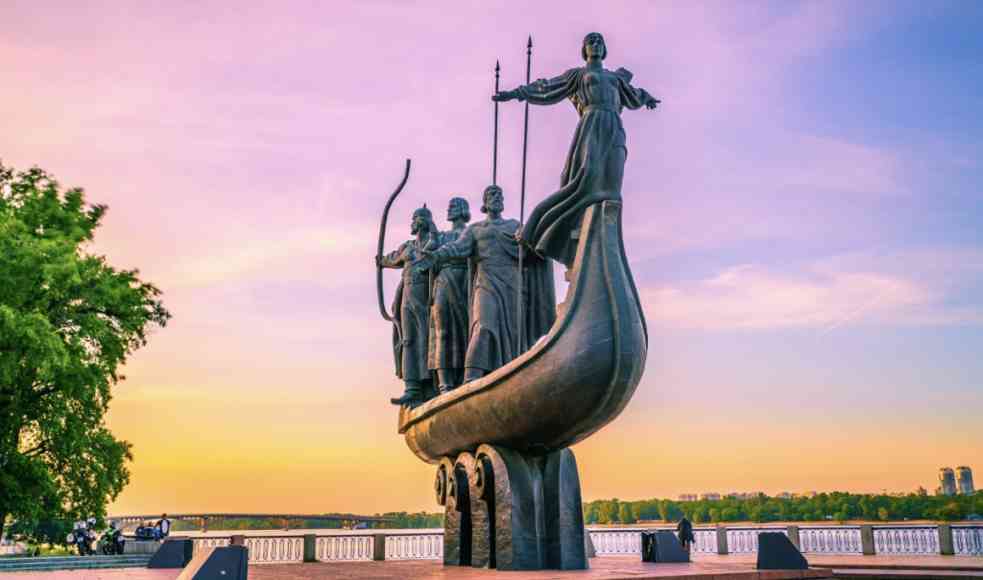The Vikings in the popular imagination versus archaeological reality
The image of the Vikings in the modern public differs significantly from scientific findings. )kcotS ebodaeirelagdepraW(Photo: © The Vikings have long held a special place in popular culture and in the imaginations of many people around the world. They are often described as intrepid warriors and explorers who roamed the world’s oceans and undertook raids […]

The image of the Vikings in the modern public differs significantly from scientific findings.
)kcotS ebodaeirelagdepraW(Photo: ©
The Vikings have long held a special place in popular culture and in the imaginations of many people around the world. They are often described as intrepid warriors and explorers who roamed the world’s oceans and undertook raids on their dragon boats. This romanticized idea of the Viking Age gave rise to many legends and myths that are still present today in books, films and television series. According to Neil Price, renowned historian of the Viking Age, “the Vikings hold a strong fascination because of their image as rugged and adventurous sailors who explored the frontiers of the known world” (Price, 2002).
The popular idea of Vikings: warriors and conquerors
In the popular imagination, the Vikings are seen as intrepid warriors who plundered the coasts of Europe and destroyed entire cities. They are often depicted as barbaric conquerors who spread fear and terror wherever they appear. This depiction led to an image of the Viking Age as a time of violence and destruction that is still prevalent today. However, James Graham-Campbell, an expert on Norse history, points out that “the reality was far more complex than the stereotypical depiction of the Vikings as simple raiders and conquerors” (Graham-Campbell, 2013).
The Vikings in cinema and television
The depiction of Vikings in film and television has a significant impact on the public’s perception of this historical group. They are often depicted as brutal warriors with wild hairstyles and horned helmets, although this is historically inaccurate. Well-known films like “The Vikings” (1958) and television series like “Vikings” helped shape the image of the Vikings as brutal warriors. Although these productions are entertaining, it is important to recognize that they often contain dramatic elements that distort reality. However, such films and series about Vikings help to stimulate interest in the history of this fascinating culture and raise awareness about it among a wide audience. More and more people are so fascinated by this culture that they go on vacation to Denmark, for example. Discover the history of the Vikings while traveling to want.
More recently, some productions such as “The Last Kingdom” have decided to depict the Vikings with more historical accuracy. These shows strive to show the complex society of the Vikings and provide a more realistic depiction of their culture, religion and way of life. Through such productions, viewers develop a deeper understanding of the Vikings and their history while recognizing the importance of historical accuracy in film and television.
Archaeological discoveries about Viking life
The “Ingegärd Viking” statue in kyiv commemorates the Vikings and their maritime culture.
)kcotS ebodarojaP lewaP(Photo: ©
Excavations and archaeological research carried out over the past decades have brought to light important information about Viking life. They were not only warriors, but also traders, farmers, artisans and sailors. Viking society was organized and hierarchical, and they traded with faraway countries like the Middle East and Central Asia, which required them to be experts in maritime navigation. According to renowned archaeologist Doris S. Goldstein, “Archaeological finds such as tombs, settlements, and trade goods show that the Vikings were a complex society active in diverse areas” (Goldstein, 2020).
One of the most interesting discoveries from archaeological studies is the important role played by women during the Viking Age. Contrary to popular belief that Viking women were passive housewives and mothers, they were often actively involved in economic and political decisions. They were also able to:
- own your own land
- do business independently
- participate in raids
Goldstein points out that “archaeological finds of tombs in which women were buried with weapons and other equipment indicate that some women also fought as warriors” (Goldstein, 2020).
The importance of religion and mythology among the Vikings
The Vikings were known for their belief in a variety of gods and goddesses worshiped in Norse mythology. Odin, Thor and Freya were among the most famous deities worshiped in epics and sagas. Archaeological finds such as runestones and religious artifacts provide insight into Viking religious practices and beliefs. Price emphasizes that “religion played a central role in the lives of the Vikings and greatly influenced their art, architecture and social structures” (Price, 2002).
The relevance of the Vikings in current research
Modern scholars are digging deeper to paint a more complete picture of the Viking Age and uncover the many aspects of this fascinating culture. An area of particular interest here is the role of Viking women in society. Through archaeological excavations and examinations of burial sites and artifacts, researchers seek to better understand life and experiences during the Viking Age. Additionally, many studies focus on the Vikings’ influence on the cultural development of Europe and their contributions to subjects such as trade, navigation, and art.
Another important area of research is the genetic study of Viking populations and their impact on modern society. By analyzing DNA samples from archaeological finds and comparing them with modern populations, scientists gain information about the ancestry and distribution of the Vikings. This research contributes, on the one hand, to clarifying the history of the Vikings and, on the other hand, to deepening our understanding of human migration and its evolution. Overall, the study of the Vikings remains a vibrant and relevant discipline that continues to provide new knowledge and perspectives on this fascinating culture.
Conclusion: The complexity of Viking life
Overall, popular imagination and archaeological reality show that Viking life was far more complex and nuanced than is often portrayed. While undoubtedly known for their martial culture, the Vikings were also skilled artisans, successful traders, and skilled sailors. Their society was organized and hierarchical, and women played important roles in many areas of public life. By combining archaeological finds with historical records, we can get a more complete picture of who the Vikings really were and the impact they had on world history.
Sources:
Doris S. Goldstein, “The Viking World”. Routledge, 2020.
Neil Price, “The Viking Way: Religion and Warfare in Late Iron Age Scandinavia.” Oxbow Books, 2002.
James Graham-Campbell, “The Viking World”. Frances Lincoln, 2013.














